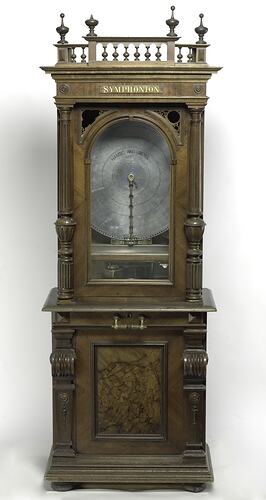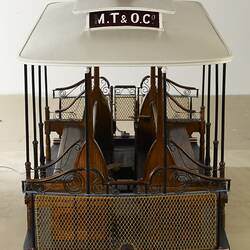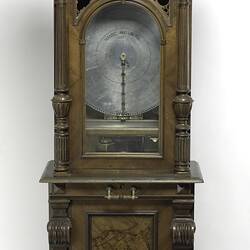Summary
Customers inserted a coin to activate a clockwork mechanism that rotated the disc. Small projections on the disc plucked the teeth of a metal comb, causing music to play. The symphonion features in Museums Victoria's Melbourne Story exhibition.
This symphonion once rang out in Cole's Book Arcade, one of the wonders of 'Marvellous Melbourne'. It was a shop like no other, crammed with new and second-hand books and other wares, but with the atmosphere of a circus.
Proprietor Edward William Cole was a brilliant publicist and idealist, enticing customers of all ages with caged monkeys, an aviary, a fernery and a live band. Readers could sit in comfortable chairs, encouraged by a sign: Read for as Long as You Like - Nobody Asked to Buy.
The symphonion featured in Cole's newly expanded music department. It was made in Germany by the Symphonion Company in the mid 1880s.
Customers inserted a coin to activate a clockwork mechanism that rotated the disc. Small projections on the disc plucked the teeth of a metal comb, causing music to play.
Discs with different tunes were stored in the cupboard below. Favourite tunes of the day were available, including The Blue Danube and Hansel and Gretel.
Symphonions and other mechanical music boxes were very popular in Europe and North America in the late 19th and early 20th centuries. The Symphonion Company began business in Germany in 1885, and manufactured the first disc-playing musical box.
The company existed under several names but was still producing machines in 1930.
More Information
-
Keywords
-
Localities
-
Authors
-
Article types


